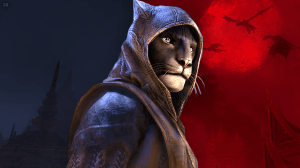Following March’s Outlawed #1, the Marvel Universe is putting a new spin on the idea of “Civil War” by pitting the teenage super heroes against the world in Champions #1, but unfortunately, the series manages to fall under the same weight that dragged down the original concept. With the Champions inadvertently causing massive destruction and injuries in the wake of one adventure, a new law has been enacted with similar characteristics to the “Super Hero Registration Act,” but it ultimately proves far more confusing than initially presented.
Videos by ComicBook.com
Eve Ewing manages to capture the confusion and hopeless feeling of the young superheroes who compose the Champions, while also distinguishing the individual members within the team’s bloated roster of characters. The irony that the law attempting to outlaw “young vigilantes” is dubbed “Kamala’s Law,” with Ms. Marvel‘s alter ego being injured and society pointing the finger rightfully at the Champions, is a juicy tidbit, but interesting story beats like these are few and far between here. The premise of the story is a decent one for discussion, but uneven in its own execution.

Much like Civil War, Civil War 2, Avengers Vs X-Men, X-Men Vs Inhumans, and so on, Marvel has had a tricky time coming up with reasons for heroes to pick up arms against one another, especially in making the choices morally grey for both sides. Here, the young heroes are essentially fighting against the world at large and when they break down the inner workings of “Kamala’s Law,” I started tobe put off by the Champions’ perspective and choice to rebel against it.
If the decision were simply “young vigilantes can no longer operate as super heroes,” it would make sense why Miles Morales, Sam Alexander, and Kamala Khan would rebel, but as the heroes state in the series: there are loopholes available to them. If a young hero is able to find a “mentor,” which apparently includes a long list of characters, including D-Man, then they can continue to operate as heroes themselves. However, the Champions “poo poo” this idea, claiming that there are times when no adult can be trusted. It’s a weak position, and it pushes the premise of the story to get characters where they need to be for plot’s sake.
One inclusion that works well here is bringing in Vance Astrovik, a.k.a. Justice of the New Warriors, working for the federal government following his own career as a young hero. His character works well in attempting to find a middle ground with the Champions, but it isn’t enough for Miles and company to change their minds.
I took time dissecting the holes in “Kamala’s Law” because, when a story’s foundation is built upon one element, readers need to examine it further and consider how it plays out in the world surrounding it. Ewing’s writing gives each member of the Champions a moment to shine, with Starling—the Vulture’s granddaughter who is all for being lawless—providing a standout role. Miles works well as the story’s central protagonist. Yet once again, I was left wondering why he wouldn’t be on the side of Vance and other adults when he was a part of the Avengers and Peter Parker is a reliable mentor for him.
The art by Simone Di Meo works well here in that its exaggerated aspects do capture the energy that would be appropriate for a story revolving around teenage super heroes. The quiet character moments work just as well as some of the more action packed fare, too.
At it’s core, Champions #1 offers a new status quo for heroes that places them in a unique situation where the “kids” are fighting against the world, but the shakiness of the premise and the story possessing more holes than swiss cheese means it isn’t able to hit a home run and pull readers in for the long haul.
Published by Marvel Comics
On October 7, 2020
Written by Eve Ewing
Art by Simone Di Meo
Colors by Federico Blee
Letters by Clayton Cowles
Cover by Toni Infante








